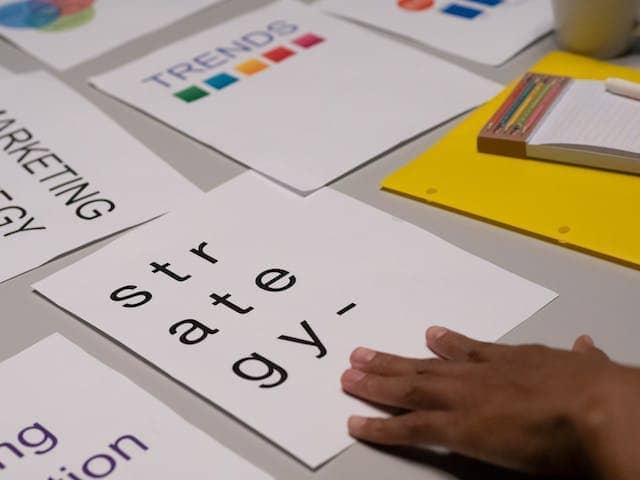How to Cure Your Content Marketing Problems

It’s crucial to stand out in a crowded field. Whether you’re a freelancer, a content marketing agency, or an in-house marketing professional hired to manage a brand’s content, you need to make the most of your existing strengths in content marketing creation, but you also need to shore up your weaknesses and develop your lesser skill sets.
Your Treatment Plan
To improve any skill set, you need a plan that encompasses at least three basic steps:
1. Evaluate Your Current Content Marketing Skills
Most people aren’t gifted with pure rational objectivity when it comes to analyzing their own strengths and weaknesses. They need a little outside input from others who ideally have some experience in evaluating content marketing or writing skills and also can be trusted to deliver useful feedback.
Find others whose opinions you’d trust and ask them to give you feedback on past content. Look for any specific areas or factors that get mentioned more than once or twice and consider focusing on those first.
2. Choose Your Target Skills for Improvement
Now that you have an idea of specific areas in which you could use a little improvement, where do you start? It might be tempting to work on all your writing or content marketing weaknesses simultaneously. Resist that temptation, however. It’s usually better to focus on one area of improvement at a time.
As for which skill set to work on first, you’ll probably get the most benefit from focusing on the area you feel could use the most work. Concentrated effort and attention on the biggest gap usually translates to greater progress, creating a bigger impact on your results in turn.
3. Take the Appropriate Actions and Adjust As Necessary
Whether you’re working on skills development or any other kind of self-improvement plans, a targeted plan is almost always going to be faster and more effective than a generalized “kitchen-sink” approach.
It’s also crucial to periodically assess your results and adjust your plan as needed. If your results are acceptable, keep doing what you’ve been doing. If not, then switch things up and try a new tactic.
Below we’ve collected specific strategies to address some of the most common content marketing writing obstacles and weaknesses.
Diagnosis: Dry, Uninteresting Writing
Symptoms: Lackluster vocabulary; sentences and paragraphs of equal length; no or insufficient engagement rates; a high bounce rate
Cure: Infuse your brand’s personality into your writing.
Think about stories
Storytelling isn’t just a buzzword in content marketing. It’s a concrete skill in content creation that yields measurable results. Humans are hardwired to respond more positively to emotional stimuli, and story-based narrative is the delivery mechanism for that kind of connection.
Get interested in your topic
Whether they’re freelance or in-house, content marketing writers aren’t always going to find their article topics fascinating. Sometimes, the topic might even bore you to tears. That’s when you have to dig deep and find something to intrigue you. Your own natural curiosity is the best possible cure for boring writing. If you’re struggling with this, put yourself into your targeted reader’s mindset and find what fascinates them about the topic.
Use daily freewriting
Concert-level musicians keep their skills sharp through daily practice. Writing isn’t much different. One practice that’s frequently recommended by writing experts to keep your skills honed and your creativity flowing is to devote 15 to 30 minutes a day to writing practice. You can use writing prompts or freeform stream-of-consciousness exercises to hone your creativity and writing skills.
Capture ideas immediately
You never know when inspiration will strike. Create some method for capturing any idea for your work at any moment, no matter where you might be. Many writers carry a small pocket notebook with them at all times, but you can also use your phone’s Notes app. The trick here is in training yourself to habitually jot down every idea as soon as possible. You’ll also want to regularly review those notes and process them into your current work.
Diagnosis: Failure to Address Customer Journey Stages
Symptoms: Too much content at top of funnel and not enough at bottom, or vice versa; not understanding the difference between content that serves one stage of the customer journey versus another
Cure: Understand the specific phases of your brand’s customer journey and target your content accordingly.
Develop personas and customer journey
While customer journeys share some common points of reference, they can differ from one brand to another. Moreover, a B2B buyer path usually involves different touchpoints than B2C paths.
Understanding the basics of customer journeys — at a minimum, the stages of awareness, consideration/evaluation, and decision — and how those journeys map on to the marketing and sales funnel is crucial for consistently good content. It also helps to understand how that journey differs for varying user personas. This information helps you target each piece of content correctly and more effectively.
Audit and strategize
Perform a content audit to identify where the gaps are, then craft a plan to address those gaps. Start by creating a simple spreadsheet or document to track basic information about the content on your site, such as URL, title, date published, topic, targeted user persona, and the specific part of the funnel.
Once you have the audit completed, look at how those pieces are spread out between your user personas and funnel position. This might seem like a lot of work but once you get this audit started, you’ll find it easy to add to as you publish new content. It will then be a fairly straightforward matter to pinpoint what parts of your customer journey need to be addressed with fresh content.
Diagnosis: Falling Behind and Off Schedule
Symptoms: Productivity issues; unmet or nonexistent deadlines; no real production schedule
Cure: Regain control of your time and your workflow.
Adopt an editorial calendar
The simplest way to get yourself and your content production back on track is to create an editorial calendar that helps you plan and schedule your future content. A simple editorial calendar might suffice for small brands, or you can search for more complex templates online.
As long as you track the status of each proposed piece of content and which personas and funnel positions it targets, along with your proposed deadlines for creating and publishing, you’ll find it far easier to keep up with your production goals.
Use focus tools
Reduce distractions while you’re working using one or more of the free or freemium focus tools that are available as apps, SaaS products and websites. Timer apps can help you keep track of how long you’ve been working, remind you to take regular breaks (essential for good health!), and even help you prepare robust reports, which are especially helpful for freelancers with many different clients. Other apps can temporarily restrict access to distracting social media sites while you work. Play around with different tools to find the combination that works best for you.
Diagnosis: Unfocused and Non-Strategic Content
Symptoms: Writing about things that interest you, not your targeted users; no real focus or direction; weak or nonexistent strategy
Cure: Get back to basics with customer research and targeted content development.
Update your customer research
To reach the audience that’s most likely to want the products and services you offer, you need to target them with the information they’re most interested in finding. Assumptions here can be fatal. You may think you know them better than they know themselves but giving them what you think they need will never prove as successful as giving them what they think they need.
If relatively recent research is lacking or nonexistent, it doesn’t necessarily take thousands of dollars to conduct a thorough survey. Simply asking a handful of loyal repeat customers can tell you a lot about what they love, what they loathe, and what they’re looking for. If the company has access to data dashboards and other metric reporting tools, ask for access to that data in order to figure out what’s working and what isn’t.
Build up your customer personas
One of the biggest concerns of marketers and content marketing writers is the process of building an engaged and attentive audience. The best way to achieve that objective is through a deep and thorough knowledge of the various types of purchasers they’re striving to attract to the brand.
Your user personas will help you target your content more efficiently. Aiming content at a specific persona helps you provide the information they find most persuasive when they’re making a purchasing decision.
Create a written content strategy
If you want to achieve your brand’s marketing goals, create a written content plan and strategy. Document your plan and how you intend to execute it. Try to anticipate obstacles and how you’ll work around them. Putting these tactics into an actual document has been proven to be an effective way to meet your goals and create winning content for your audience by avoiding the haphazard results that come from “winging it.”
Diagnosis: Stagnant Content
Symptoms: You haven’t changed your approach in ages, or ever; your content is stale and uses the same old formats and strategies
Cure: Shake things up by using what works for others.
Analyze the competition
Dive into what’s working for other brands by completing a competitive analysis. Learn from the masters by deliberately imitating them without directly copying them. Whether you try this solely in your writing practice or in your actual content, make sure you target your content to your audience and buyer personas.
Additionally, don’t limit yourself to written content. Exploring other content formats like video or podcasts or white papers can help strengthen ideation and increase your creativity. Look at how these other brands are telling compelling stories in these new formats and ask yourself how you can achieve those same results using brand-specific stories that resonate emotionally to the same degree.
Find better stories
Tell better stories with your content. Don’t limit yourself to origin stories that are well-told in your brand content history. Expand your horizons. Conduct interviews with stakeholders and customers or clients to harvest new stories and find new angles on old ones.
Work on Your Writing Weaknesses
Writing of any kind may involve some level of talent but it’s also predominantly a skill, or set of skills. And like any skill, you can work on and develop those skills to become a better, more proficient, and more effective content marketing writer. Focus on one area at a time for the quickest improvement.
Image from Pexels.com.
Thanks for reading! Do you want to create thought leadership articles like the one above? If you struggle to translate your ideas into content that will help build credibility and influence others, sign up to get John’s latest online course “Writing From Your Voice” here.



